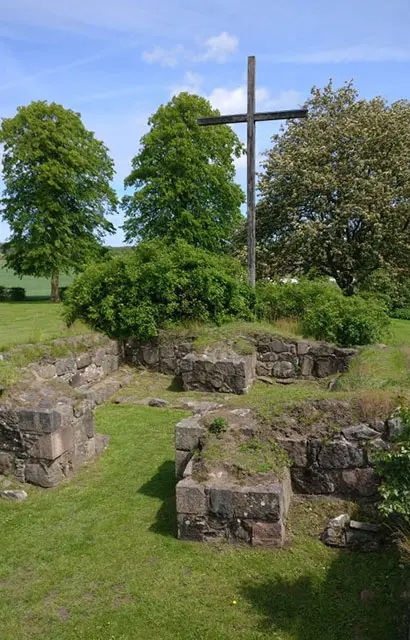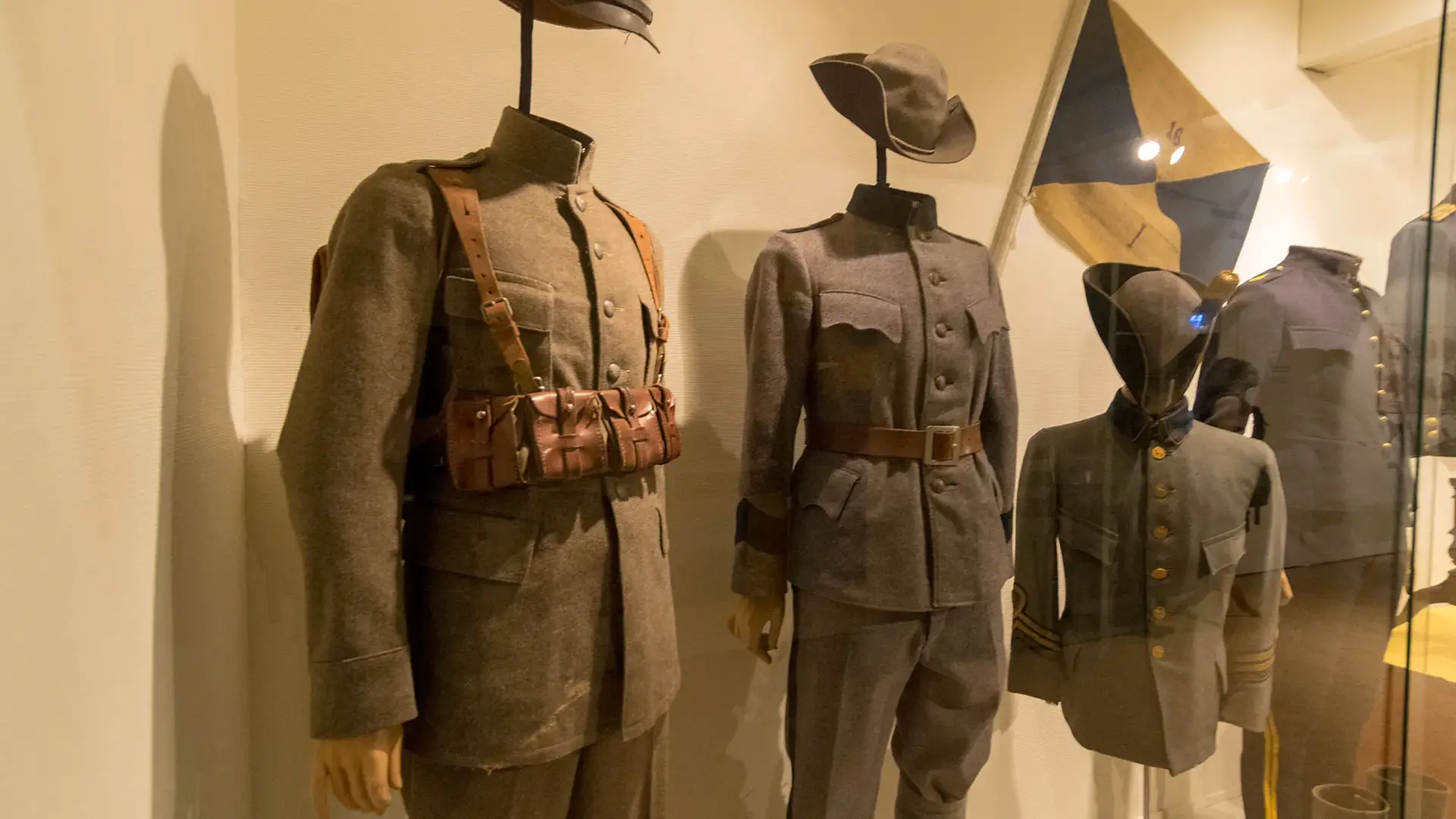- Startsida
- En
- Experience
- Culture and history
- Övraby church ruin
Övraby church ruin
Halmstad has not always been situated in its current location. Up until the 14th century, the town was located in the area now known as Övraby, i.e. “the upper town”, which is close to the Kärleken district.
The ruins visible in Övraby today are not from the first church located on the site. A stave church is believed to have been built here as early as the 11th century, apparently called Maria Church. This in turn was replaced by a stone church in the 12th century, which underwent several changes. It consisted of a longhouse, a chancel and an apse. In the western part of the longhouse, the baptism font was placed on a tall podium. In addition to the usual northern and southern entrances, there was also a wide entrance in the west. This section was probably reserved for the king or his representative, when they were visiting the nearby royal residence.

A town takes shape
In the middle of the 13th century, the settlement that existed near the church developed into a town, Halmstad. The church was also rebuilt during this period, including bricking up the western entrance and demolishing the apse. It is most likely that a porch was added in front of the southern entrance at this time. The redesign of the church may have been inspired by the Dominican Monastery and St. Örjan’s chapel, which were located on the site where Örjans Vall stands today.
The town is moved
In the 1320s, the town began to be moved to Halmstad’s current location. The Dominican monks came along and built a new monastery, St. Katarina, at what is now Klammerdammsgatan–Hantverksgatan. The church and the original site were converted back into a country village and given the name Övraby. Unfortunately, the Nordic Seven Years’ War marked the end of the upper village. In 1563, King Erik XIV made a failed attempt to conquer Halmstad, and Övraby fell victim to the Swedes. The site has been deserted since then.
More culture and history
-
Centre of Viking culture
700 – 1100. Some 1,000 years ago, Halland… -
Hiking along the Nissan River
Head out on a beautiful and interesting walk… -
Beautiful churches in Halmstad
There are several beautiful church buildings… -
The TV Serie "Our Time is Now" – the aunt in the attic
Did you known that Haverdal resident Johan…
More Halmstad
-
Inspiration and guides
Can I bring my dog to Halmstad? No problem!… -
Nature and the outdoor life
Ahh! The Halmstad air! Filled with the tangs… -
Beach and coast
Shimmering sea and colorful sunsets are only… -
Food and drink
Food and drink is not just food and drink.… -
Culture and history
In Halmstad we deliver both culture and history… -
Events
Theatre? Concerts? Art exhibitions? Sport?… -
Spa and wellness
Taking an invigorating dip in the sea, lacing… -
Shopping
Shopping is an experience in itself. Perhaps… -
The Swedish capital of golf
153 golf holes, eight unique resorts in a… -
Good to know
We have gathered together a few practical… -
Accommodation
Where would you like to stay? In a castle… -
Sports and activities
Do you like being active? Raising your pulse,…










